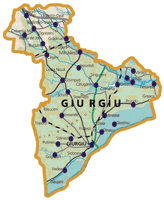
IP Outreach: Cooperation Yields Results in Romania
By Bogdan Boreschievici, Mariana Moşoianu, Ştefana Teodorov and Maria-Magdalena Dobre
This article was prepared by Bogdan Boreschievici, Mariana Moşoianu, Ştefana Teodorov and Maria-Magdalena Dobre of the Romanian State Office for Inventions and Trademarks. They were eager to record their outreach experience and share it with other industrial property offices in emerging economies and developing countries which also face the formidable challenge of promoting the industrial property system with limited or no dedicated personnel and even more limited budgets – with a bit of cooperation, it can be done.
In 1836, the U.S. Patent and Trademark Office hired an impressive number of copyists to transcribe patent documents in order to make them available to the public through all the major U.S. public libraries. An astonishing number of patent documents are also listed in the catalogue of the British Library. This information came as a surprise to the staff of the Romanian State Office for Inventions and Trademarks (OSIM) when it was brought to their attention by Romania’s National Association of Public Librarians and Libraries (ANBPR).
Why the interest of the Association in patent matters? They wanted to cooperate more closely with OSIM in promoting and disseminating industrial property information. That was back in 2002.
The role of public libraries in Romania
Two years earlier, ANBPR had invited OSIM to a five-day seminar on the workings of the country’s public library system: each of Romania’s 41 counties has a county library that coordinates from 30 to over 100 city and communal public libraries – a total of some 3,500 libraries, receiving over 1,000 visitors daily. Most are young people; the youngest library card holder on record is a one year old.
The County Libraries subsist on monies provided by the local community and, as a result, are under an obligation to provide a service to that community – a mission they live up to. For years County Libraries have survived on meager funding, exacerbated by difficult economic conditions in the countryside. So what community service could they offer without having a computer with Internet access? Simply put, they provided access to knowledge.
In a country where neither parents nor schools can afford the books children need to acquire a basic education, public libraries have bridged the gap. Librarians – working in cooperation with schools, teachers, local administrations and parents – have taken on a supplementary role by making available to children, and guiding them through, the books and materials they need. Thanks to this cooperation, children have not been deprived of their fundamental right to an education and have gained access to culture.
County Libraries are constantly seeking ways to serve the community, and inhabitants adopt the habit of going to the library at a very young age. But at the time, librarians were reluctant to add industrial property protection to their long list of responsibilities.
A turning point
In 2002, OSIM organized an international seminar, with WIPO’s support, at the County Library of Cluj. OSIM describes it as the turning point in their relationship with County Libraries. It was at this event that ANBPR sought out closer cooperation with OSIM.
OSIM discovered that County Libraries had reached a critical juncture and were becoming the agora of local society, a position for which they sought recognition. Although books were still a primary focus, County Libraries had also began to apply marketing techniques to identify local needs, had started to use new managerial techniques and – most revolutionary of all – had decided to look for ways to integrate industrial property related-activities into their busy schedules. Librarians received no additional pay for the extra work, and even gave of their personal time to further the project. Their reward was in responding to the growing need in the community, and in the partnership formed with OSIM.
Launch of cooperation
ANBPR libraries had adopted a new three-fold structure, reflecting the libraries’ roles in the local community: traditional library activities; community information services; and a recreational center. OSIM immediately realized that industrial property protection could find a home within library information services.

(Courtesy OSIM)
Each County Library designated a Project Coordinator for basic training at OSIM on industrial property protection. On their return from OSIM, Project Coordinators would make OSIM publications available to those interested, guide them in accessing industrial property databases and offer general information on industrial property laws as well as technical assistance. Most important, Project Coordinators would in turn train a colleague from each library in the county on industrial property protection. Project Coordinators would also promote industrial property in the local media; keep abreast of changes in industrial property laws; and organize special days and seminars.
Using Giurgiu County as an example, it is easy to see how the project works in practice. Starting from the town of Giurgiu, the county capital, a minimum of effort enables information to reach faraway points in the county. The OSIM-trained Project Coordinator in Giurgiu is the industrial property focal point for local library users and trains collaborators from libraries around the county. After training, librarians return to city and communal libraries with promotional materials that are then made available locally.
It is an effective system: librarians are trained at a central point, and outreach materials are distributed at minimum cost. But it is not quite as simple as that; training of Project Coordinators is complex. All of them are university graduates but with diverse qualifications: lawyers, engineers, philologists, to name but a few. It takes effort to find a common language, avoid information overload and focus the enthusiasm and interest of Coordinators.
After training, the Coordinators’ responsibility for information dissemination is limited and monitored, and more complex questions are handled by OSIM. OSIM staff cannot help but be excited when an e-mail arrives from a remote part of the country requesting information on the registration of a trademark, or details on how to gather information on a patent. Such interest is highly rewarding to both Library Coordinators and OSIM – the more remote the origin of the request, the greater the satisfaction.
Targeting young people
OSIM identified a second important function of libraries: their relationship with young people – from providing a recreational center to methodological guidance as a complement to the school curriculum. The I.N. Roman Library in Constanţa gives the following statistics for users enrolled in 2007:
- Pupils (under 18) 38.1%
- Students (university) 20.37%
- Professionals 8.8 %
- Workers (blue collar) 7.07 %
- Retirees 4.8 %
- Others 20.06 %
These numbers are typical of most libraries. They show the potential of libraries to reach hard-to-access parts of the population: almost 40 percent of users are under 18.
OSIM and ANBPR launched a second project aimed at youth. They invited a group of 10 and 11-year-olds to learn about industrial property issues. What seemed a daunting task to OSIM staff – talking to children about a somewhat dry subject – suddenly became possible when someone suggested the WIPO “Patent” and “Trademark” comics be used as a learning tool. Remarkably successful, the comics were projected as a slide show and eventually shown to pupils from grades three to seven in Bucharest, Constanţa, Vaslui, Slatina, Galati and Ramnicu Valcea, among others.

The Cricket and the Ant (Courtesy: OSIM/Carmen Lazar)
Much was learned from the experience – by both OSIM and students. Children responded very differently from adults. For one, they were already much more informed and the issues involved were not new to them. However, presenting the information in a systematic way provided them with a basic understanding of industrial property and its relevance to their own lives. Teacher feedback after three months showed the presentation had clearly had a positive impact on the children. There are numerous requests to repeat the exercise in the upcoming school year.
Meanwhile, OSIM has created its own comic strip: The Cricket and the Ant, which highlights the risks inherent in counterfeiting. The film has two variants: a cartoon and a puppet show. The puppeteers are children from the Licurici puppet theater in Bucharest. Both variants can be viewed on OSIM’s website.
The results
Seven years of cooperation between OSIM and ANBPR has produced results: industrial property-related articles and interviews regularly appear in local media; seminars are organized on industrial property issues; industrial property elements are incorporated into local events; and there is increasing interest in learning about industrial property. OSIM receives more and more questions that Project Coordinators cannot answer. And, to top it all, the number of applications for industrial property titles is on the rise.
OSIM plans to further develop its information dissemination program to better reach smaller localities. The Office also aims to make its work with young people a regular part of the national industrial property strategy. OSIM would like to develop an outreach program for youth similar to that of the U.K.’s Think KitTM, which combines playing games, creative activities and industrial property. Perhaps the children of today will use the knowledge thus acquired to open the businesses of tomorrow.
___________________________
| IP Outreach in Practice |
|---|
|
A search in the IP Outreach in Practice database, launched by WIPO in 2008, yields 168 records of outreach programs aimed at young people from grants, scholarships and award programs to science and creativity competitions, games, mentoring, educative tools for teachers – the list is long. Space allows us to highlight only a few:
|
____________________________
Next article: Collective Management of Audiovisual Works: Facing the challenges, then and now
The WIPO Magazine is intended to help broaden public understanding of intellectual property and of WIPO’s work, and is not an official document of WIPO. The designations employed and the presentation of material throughout this publication do not imply the expression of any opinion whatsoever on the part of WIPO concerning the legal status of any country, territory or area or of its authorities, or concerning the delimitation of its frontiers or boundaries. This publication is not intended to reflect the views of the Member States or the WIPO Secretariat. The mention of specific companies or products of manufacturers does not imply that they are endorsed or recommended by WIPO in preference to others of a similar nature that are not mentioned.